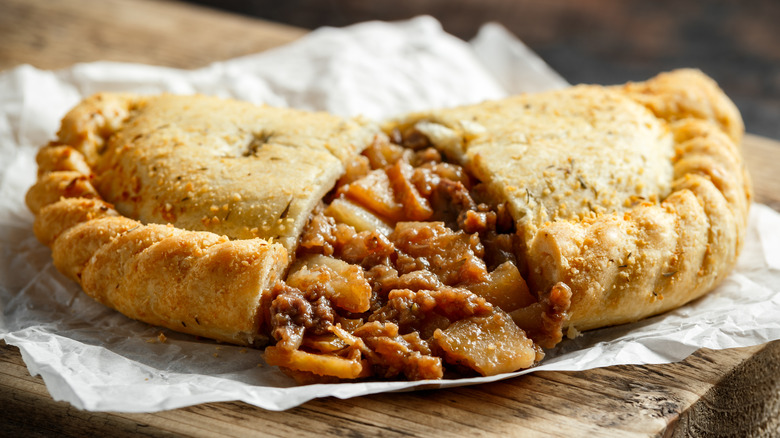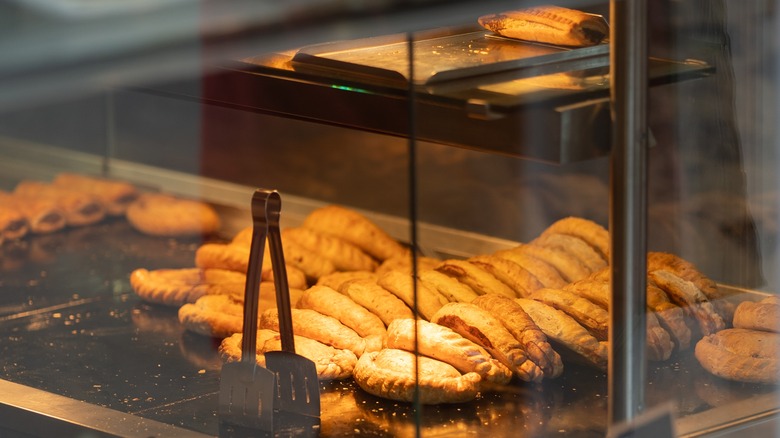The Interesting History Of Michigan Pasty
The savory, meat and vegetable-filled pasty has served as a hearty meal for more than 150 years in Michigan's Upper Peninsula (U.P) where the simple but hunger-satisfying meal has become a significant part of the region's cultural identity.
Pronounced with a soft "A" (pass-tee), a traditional filling for the pasty is meat (usually ground beef or pork, but it may also have other meats like chicken and round steak) are included in conjunction with diced vegetables such as potatoes, rutabagas, onions, and carrots, according to A Healthier Michigan. While it may seem like an unusual condiment for a meat pie, pasties are traditionally served with ketchup in the U.P., but others prefer gravy. A cooked pasty can satisfy large appetites, weighing about 2 lbs., per What's Cooking America. Pasties are also a great meal to eat while in a hurry or on the go, as they can be enjoyed without a fork (via Delishably). The best way to eat a pasty is from the top down so if the whole pasty is not consumed, it's easy to pack away the leftover portion for easier eating later.
A meal fit for a miner
The pasty was not invented in the U.P. but by Cornish settlers who came to the northern region to work in iron and copper mines, according to The 'Gander. During the 1840s and in the decades following, the hard-working immigrants brought a hand-held meat pie into the mines. Per What's Cooking America, it was also an easy meal to heat up while deep the mine. All the miner needed to do was place his pasty on a shovel and hold it over a candle.
The thick crust on the pasty is also intentional. What's Cooking America explains that the dough was hand crimped in order to provide a grip for the miner. After eating the pasty, the crust was tossed away so the miner was not eating what his hands touched, which were often dirty and possibly contaminated with dangerous chemicals. Although lore states that some miners believed the discarded crusts fed the ghosts that haunted the mines.
Over time the pasty changed a bit. While the vegetables are sliced in Cornwall, they are diced in Michigan (via A Healthier Michigan). The pasty proves to be an adaptable food. Finnish settlers that came to Michigan swapped out the rutabaga for carrots, per The 'Gander. Nowadays, cooks have updated the pasty with a variety of ingredients, such as cheese and jalapeños, or even create dessert pasties. The pasty is a meal of not only convenience, but of long-standing tradition.

